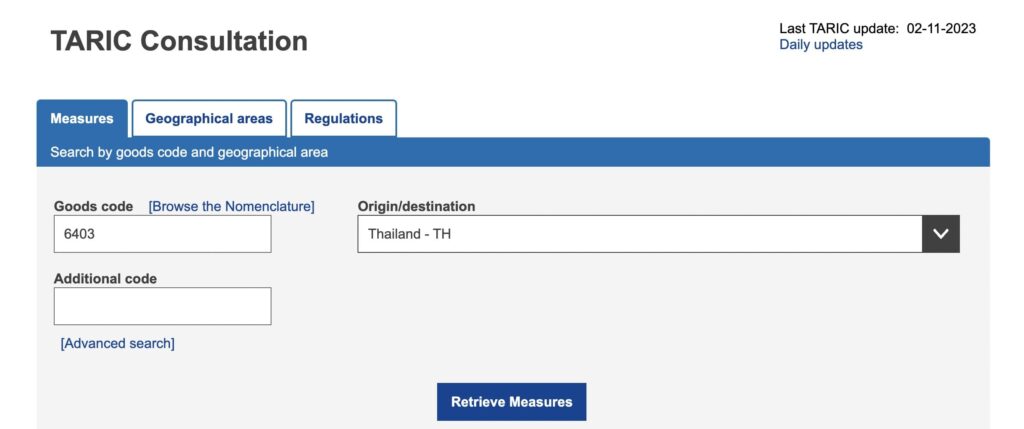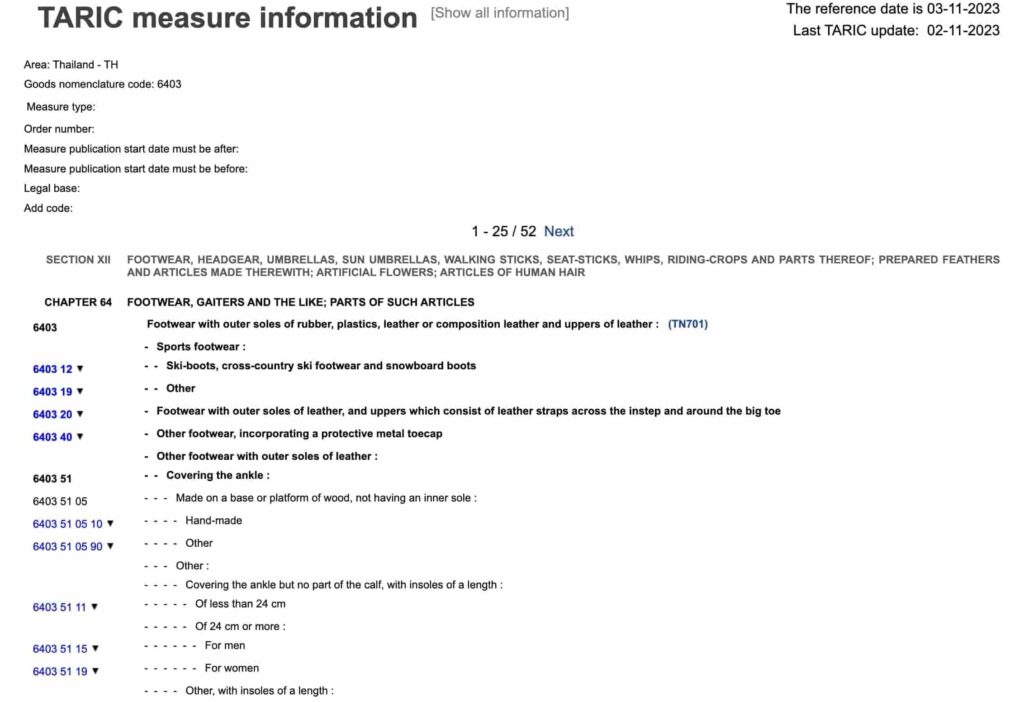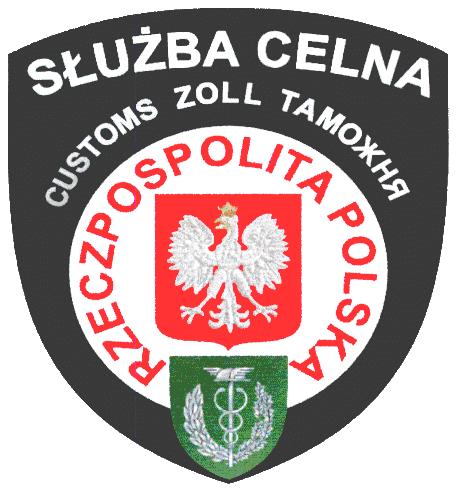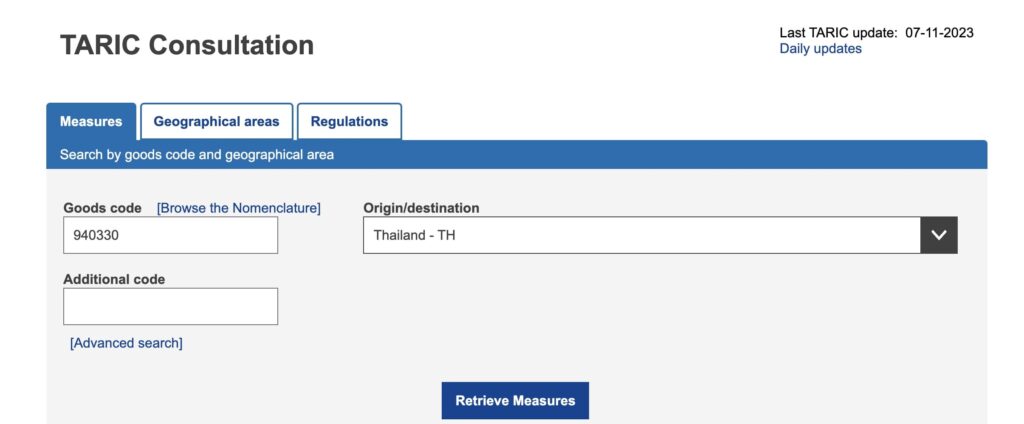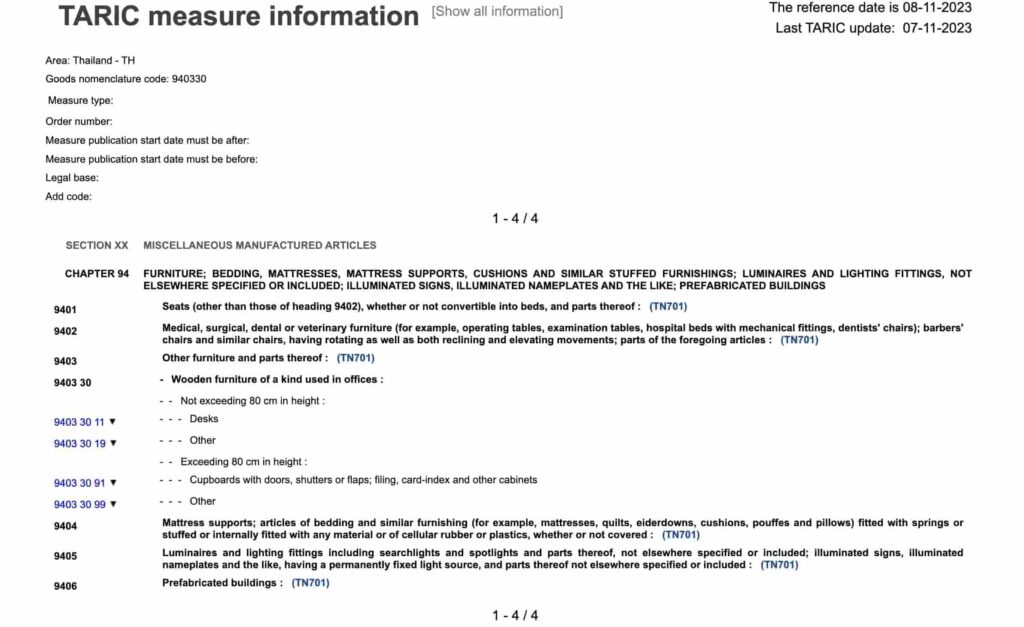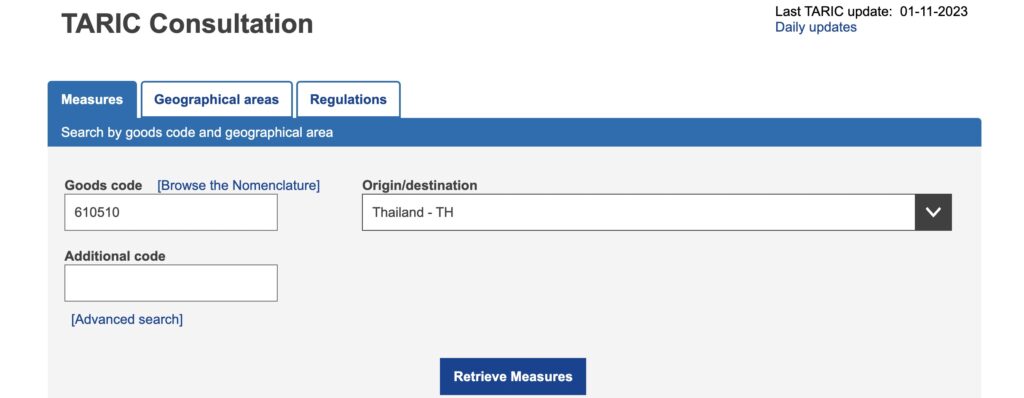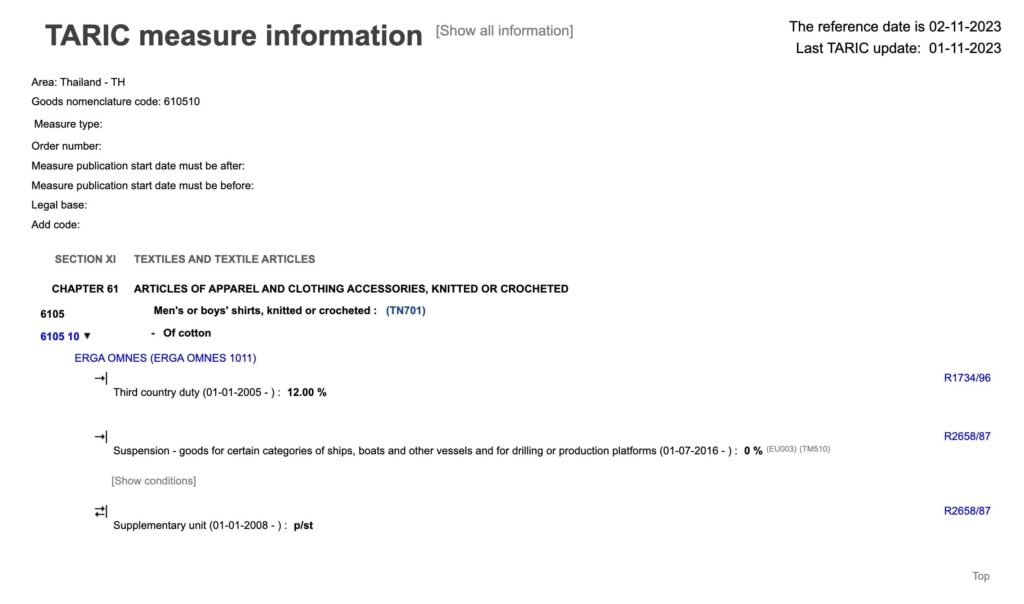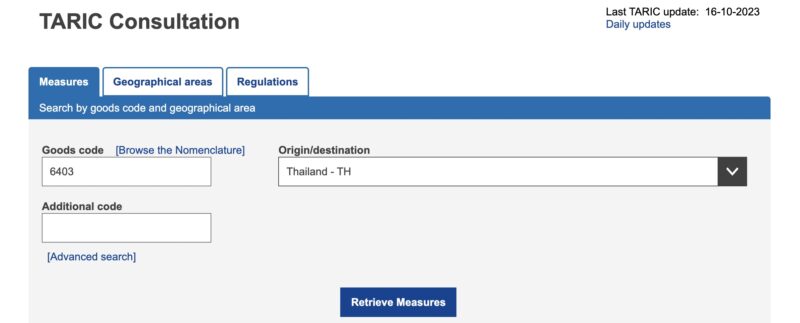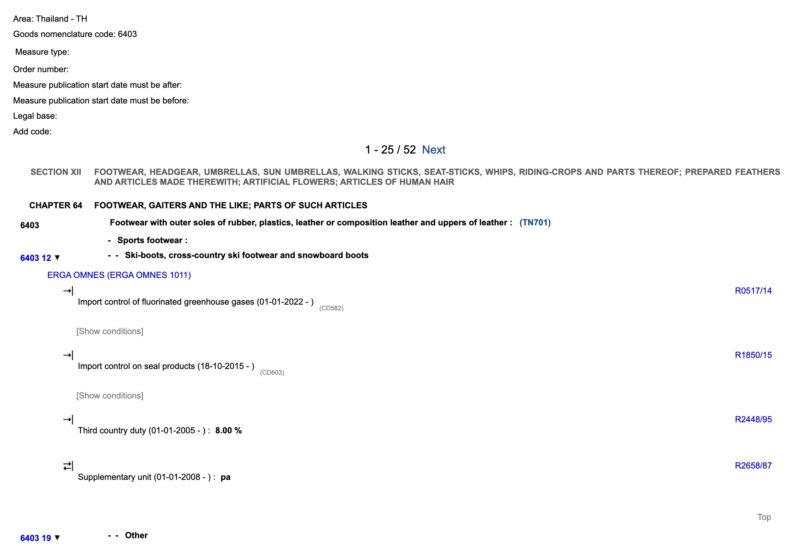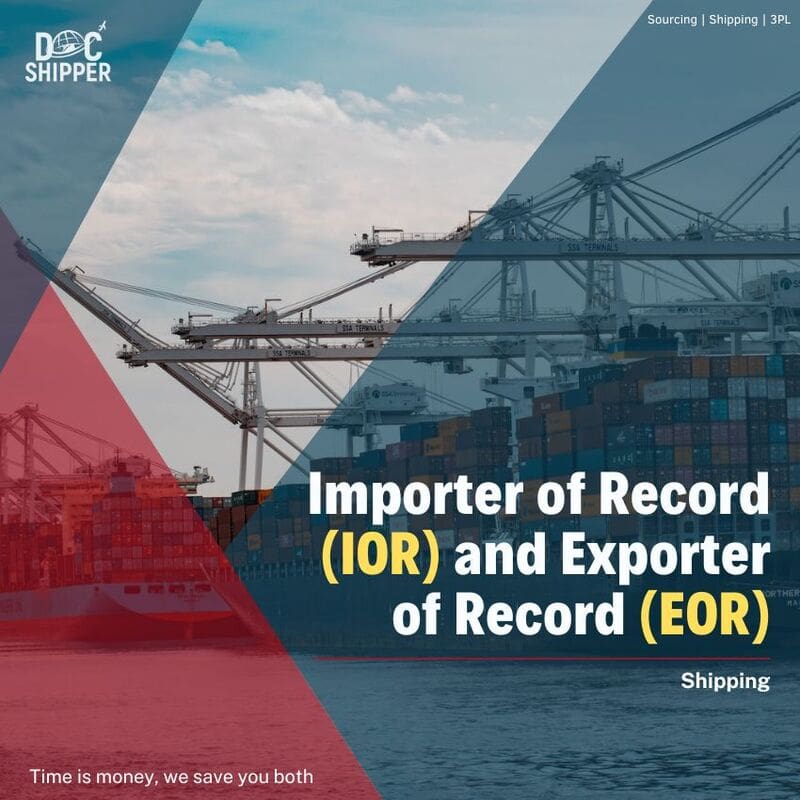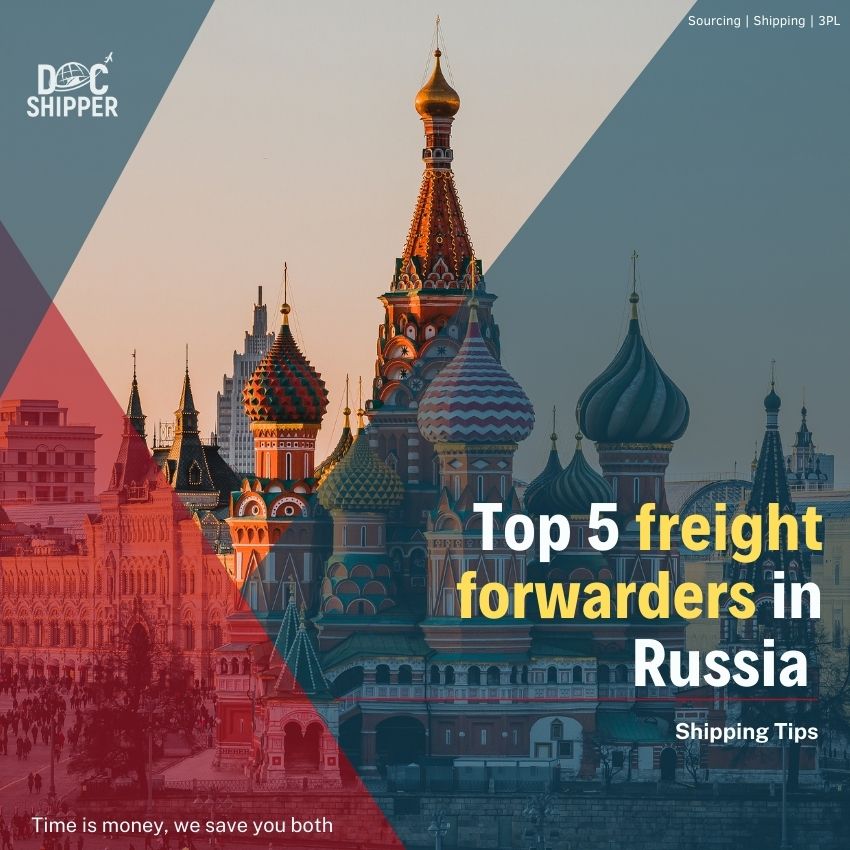Why did the shipping container go to therapy? It was tired of always feeling boxed in! But all kidding aside, mastering the complexities of rates, transit times, and customs regulations in freight transportation can be a daunting task. This guide is designed to be your beacon, shining light on the labyrinth of international freight forwarding between Thailand and Ireland.
From comparing air, sea, road to rail freight options, navigating through the maze of customs clearance, duties and taxes, this guide has everything a business needs to successfully transport their goods. You'll find comprehensive advice tailored to your specific needs, helping you reach your destination seamlessly. If the process still feels overwhelming, let DocShipper handle it for you! We are the experts in turning the challenges of international logistics into business success.
Which are the different modes of transportation between Thailand and Ireland?
Choosing the right shipping method from Thailand to Ireland is much like planning a global adventure - it's all about finding the best route! Blessed by oceans, going by air might seem obvious, but don't discard sea routes just yet. Amidst vast distance and international borders limiting road and rail, air and sea transport emerge as the survival of the quickest and the most economical.
It's a delicate balance between efficiency and cost, uniquely tailored just for you. So, just as you would for embarking on a trip, let us carefully choose the ideal 'vehicle' for your cargo's journey too.
How can Siam Shipping help?
Looking to ship goods between Thailand and Ireland? Trust in DocShipper's expertise. We handle the complexities of international shipping – from planning, customs clearance to quick delivery. Got a query about your cargo's journey? Reach out to our consultants for free. Click here for a no-obligation estimate in less than 24 hours.


![]()
Siam Shipping Tip: Consider ocean freight if:
- You are shipping large volumes or bulky items, as sea freight offers the most space at a cost-effective rate.
- You're not racing against the clock. Ocean freight takes its sweet time, especially when stacked up against other transport methods.
- Your supply chain is linked up with big-name ports. Think of it as the VIP lane on the maritime superhighway.
Sea freight between Thailand and Ireland
Trade relations between Thailand and Ireland have flourished over the years, making the business of ocean shipping a crucial link between these lands. Key industrial centers conveniently connect through bustling cargo ports such as Laem Chabang in Thailand and Dublin Port in Ireland. Opting for sea freight opens a cost-effective gateway for high-volume goods, though patience is key with this slower method. Yet, many businesses feel besieged by the labyrinth of complexities that ocean shipping can present.
Commonly, mistakes due to unfamiliarity with best practices and country-specific procedures prove to be hefty setbacks. But fear not, as we unravel these knotty concerns here, equipping you with the know-how to sail smoothly across the shipping seas. Clear, practical guidance is your ticket to dodge common pitfalls, so let's dive deep into these waters together and chart your course for more efficient, fuss-free ocean shipping. Remember, every challenge is but a wave, navigable with the right compass – that's what we aim to provide.
Main shipping ports in Thailand
Laem Chabang Port
Location and Volume: Located in the city of Laem Chabang, this port is essential for its large capacity, with a shipping volume of over 18 million TEUs in 2022.
Key Trading Partners and Strategic Importance: The primary trading partners are mainly from Asia including China, Japan, and Singapore. The port's strategic location allows it to serve as a gateway to the Middle East, Europe, and America.
Context for Businesses: If expanding your reach to the Asian market falls within your business strategy, the Laem Chabang Port might be crucial, given its deep-water facilities and state-of-the-art logistics capabilities.
Bangkok Port
Location and Volume: Nestled in the Klong Toei District of Bangkok, this port is significant due to its location within the nation's capital, processing over 8,7 million TEUs in 2022.
Key Trading Partners and Strategic Importance: Among the top trading partners are countries like China, Japan, and India, reinforcing the port's strategic importance for trade within Asia.
Context for Businesses: If your company frequently ships to or from South Asia, Bangkok Port's vast connections could be a critical component of your shipping strategy.
Map Ta Phut Industrial Port
Location and Volume: Map Ta Phut Industrial Port, based in Rayong, has a unique significance for facilitating the export of petrochemical and chemical products, with a shipping volume of around 16 million metric tons per year.
Key Trading Partners and Strategic Importance: Key trading partners revolve around the petrochemical industry, with countries like Japan, South Korea, and China occupying a significant portion of the trade volume.
Context for Businesses: If your company operates in the petrochemical domain and intends to explore Asian markets, Map Ta Phut Industrial Port, with its specialized services, might be a beneficial choice.
Sattahip Port
Location and Volume: Sattahip Port, situated in the Chonburi province, serves primarily as a naval base but also hosts commercial activities, with a shipping volume not on par with the country's main commercial ports but still significant.
Key Trading Partners and Strategic Importance: Many of its trading partners are countries with naval alliances, including the United States and various ASEAN countries.
Context for Businesses: If your shipping needs connect to military goods or any related field, considering Sattahip Port could be beneficial given its well-established naval facilities.
Sriracha Harbour Deep Seaport
Location and Volume: Positioning in the Sriracha district of Chonburi province, this port focuses on dry bulk cargo, with a shipping volume of approximately 4,5 million tons per year.
Key Trading Partners and Strategic Importance: The port's notable trading partners include China, South Korea, and various ASEAN countries specializing in construction and infrastructure development.
Context for Businesses: If your enterprise focuses on construction materials or related commodities, the Sriracha Harbour Deep Seaport, being an expert in handling dry bulk cargo, may offer an advantage in your logistics.
Kantang Sea Port
Location and Volume: Based in Trang province and concentrated on supporting the local industries, this port's yearly shipping volume might not match larger Thai ports but its regional influence is significant.
Key Trading Partners and Strategic Importance: The port’s main trading partners are Malaysia and Singapore, with a focus on agriculture and fishing industries.
Context for Businesses: If your company is involved in agriculture or fishing and targets the southern Asian market, Kantang Sea Port can significantly support your shipping strategy due to its specialized operations.
Main shipping ports in Ireland
Port of Dublin
Location and Volume: Located on the eastern coast of Ireland, the Port of Dublin is the primary passage for trade in the country, with a shipping volume of 28 million tonnes.
Key Trading Partners and Strategic Importance: The chief trading partners are the UK, Belgium, and the Netherlands. This port is known for its strategic importance as it connects Ireland to mainland Europe and the UK.
Context for Businesses: If you're looking to tap into the Irish market or use Ireland as a gateway to the UK or Europe, the Port of Dublin's strong infrastructure and advantageous location could be key to your logistics strategy.
Port of Cork
Location and Volume: The Port of Cork, on the southern coast of Ireland, is another vital port in the country, with a shipping volume of approximately 10,6 million tonnes.
Key Trading Partners and Strategic Importance: With France, Spain, and the USA as main trading partners, this port holds strategic value as it is the only Irish port with direct services to all these countries.
Context for Businesses: If you're considering diversifying your trade to span across Europe and North America, the Port of Cork provides excellent connections and might play a crucial part in your business expansion.
Port of Shannon Foynes
Location and Volume: Located on the western coast of Ireland, Shannon Foynes Port is the largest bulk port in the country, with a shipping volume of around 10,9 million tonnes.
Key Trading Partners and Strategic Importance: Key trading partners include the UK, US, and Europe. Shannon Foynes port is strategically noteworthy owing to its deepwater capabilities, capable of handling Panamax and Capesize vessels.
Context for Businesses: If you're involved in bulk shipping or heavy industries, Shannon Foynes Port, with its deepwater abilities and variety of bulk shipping options, might be a boon to your logistics network.
Port of Waterford
Location and Volume: The Port of Waterford, located in the southeast of Ireland, oversees a shipping volume of around 1,6 million tonnes.
Key Trading Partners and Strategic Importance: Primarily connecting with the UK, Netherlands, and France, the Port of Waterford offers a geographical advantage for businesses looking to tap into these markets.
Context for Businesses: If your company's strategy involves expansion or steady trade with the UK, Netherlands or France, the Port of Waterford's connectivity and comprehensive cargo handling capabilities can support your operations robustly.
Port of Rosslare
Location and Volume: The Port of Rosslare, situated in the southeastern corner of Ireland, handles a shipping volume of roughly 2,5 million tonnes.
Key Trading Partners and Strategic Importance: Key trading partners include the UK, Europe, and Scandinavia. Rosslare Europort is strategically significant for its ferry connections to the UK and France, serving as a major passenger and freight ro-ro port.
Context for Businesses: If your business involves extensive use of ro-ro operations, especially with the UK and France, considering the Port of Rosslare in your logistics plan can be a strategic move.
Port of Belfast
Location and Volume: Located in the northeastern corner of the island, the Port of Belfast in Northern Ireland manages a shipping volume of over 24,5 million tonnes.
Key Trading Partners and Strategic Importance: Trading chiefly with the rest of the UK and Ireland, the port holds strategic importance as it's Northern Ireland's primary maritime gateway.
Context for Businesses: If you're focused on trade within the UK and Ireland, utilizing the Port of Belfast can provide efficient routes and smooth logistics, given its comprehensive cargo handling facilities and excellent hinterland connections.
Should I choose FCL or LCL when shipping between Thailand and Ireland?
Deciding between Full Container Load (FCL) and Less than Container Load (LCL), or consolidation, can be a real game changer when shipping goods from Thailand to Ireland. It's not just about getting your freight to its destination, but how efficiently, affordably and smoothly it gets there. Your choice can significantly impact your bottom line, delivery speed, and the overall success of your shipment.
Let's break down these two sea freight options, deciphering the ins and outs so that you can make an informed, strategic decision that aligns perfectly with your shipping needs.
LCL: Less than Container Load
Definition: LCL (Less than Container Load) shipping is a method of transporting goods that are not enough to fill a standard container. This means your shipment will be consolidated with others to make up a full container load.
When to Use: LCL is a more cost-effective and flexible solution for smaller amounts of cargo. This method is ideal when shipments are between 13 to 15 CBM (Cubic Meters).
Example: For instance, a business trading handcrafted goods from Thailand to Ireland would benefit from LCL shipping. Since their cargo isn't high in volume, sharing a container with other shippers can offer cost savings.
Cost Implications: When using LCL, you pay for the exact volume you send, rather than a whole container. This allows you to control your costs effectively. But remember, costs can vary due to factors like the nature of your goods, routing, and fluctuations in global freight rates. Hence, it's advisable to get an LCL shipping quote to have an accurate understanding of the total cost.
FCL: Full Container Load
Definition: FCL (Full Container Load) shipping is a freight transport option where the entire container is exclusively dedicated to one shipper's goods.
When to Use: FCL shipping is ideal when your cargo exceeds 15 cubic meters (CBM). It’s not only cost-effective for high volume shipments, but it also offers added security as your goods are sealed within the container from origin to destination.
Example: For instance, a home-furnishing business that needs to ship a bulk order of 200 armchairs from Bangkok to Dublin could effectively utilize a 40'ft FCL container. This enables them to cut costs, secure the items and minimize the risk of damage during transit.
Cost Implications: Despite the higher initial FCL shipping quote, choosing an FCL container, be it a 20'ft or 40'ft container, reduces the cost per unit, particularly for large shipments. This is because you are paying for the whole container and not per CBM, as you would with LCL. Hence, with volume comes savings. Remember, an essential aspect of FCL shipping is to avoid being put off by the initial quote; instead, consider the overall cost-effectiveness.
Unlock hassle-free shipping
Choosing between consolidation and a full container? Let DocShipper simplify the shipping maze for you. Our ocean freight experts facilitate hassle-free cargo shipping, assessing your business needs in line with size, weight, destination, and budget. In the complex world of international trade, our team is committed to finding the best shipping solution for your Thailand-Ireland route. Reach out now for a free estimation, and start your seamless shipping journey today!
How long does sea freight take between Thailand and Ireland?
Sea freight transit times between Thailand and Ireland typically vary based on a myriad of factors including the specific ports used, the weight of the shipment, and the type of goods being transported. Like any other route, reaching a precise timeframe isn't that straightforward - thus reaching out to an expert freight forwarder like DocShipper for a custom quote will help you get the most accurate information.
Right now, let's take a look at the standard average transit times between the main ports in both countries, which will help you get a decent understanding.
| Origin Port (Thailand) | Destination Port (Ireland) | Average Transit Time (Days) |
| Port of Laem Chabang | Port of Dublin | 36 |
| Port of Bangkok | Port of Cork | 40 |
| Port of Krabi | Port of Dublin | 36 |
| Port of Phuket | Port of Cork | 34 |
*Remember though, these are just average times and your shipment could take longer or shorter depending on the specific circumstances.
How much does it cost to ship a container between Thailand and Ireland?
Understanding ocean freight rates can seem daunting, but that's where our expertise comes in! Shipping costs for a container between Thailand and Ireland fluctuate broadly and depend on your specific needs. From the Point of Loading to the Destination and even the nature of your goods, myriad factors influence the final quote. Don't forget the invisible hand of monthly market shifts. Because of these variables, pinning down an exact price is challenging.
But fear not! Our shipping specialists will work tirelessly, sculpting a tailor-made solution for you, always striving to quote the most competitive rates. We're here to streamline your shipping journey, always on a case-by-case basis.
Special transportation services
Out of Gauge (OOG) Container
Definition: An OOG container is designed for goods that exceed standard container dimensions. These are ideal for shipping large machinery and bulky items.
Suitable for: You might need an OOG container for oversized items that cannot be disassembled or fit into standard containers.
Examples: Large industrial machinery, turbines, tractors, or yachts would need this type of shipment.
Why it might be the best choice for you: If your cargo is too wide, high, or long for standard containers, an out of gauge container can accommodate to get your goods safely to Ireland from Thailand.
Break Bulk
Definition: Break bulk refers to cargo that is too big or heavy to be loaded directly onto a container but can be individually loaded onto the vessel.
Suitable for: Bulk goods or items that are loaded directly onto the vessel.
Examples: Timber, construction equipment, or large coils of steel would be shipped under this method.
Why it might be the best choice for you: Break bulk shipping provides a flexible option for non-containerizable goods, making it ideal if you are dealing with heavy and irregularly shaped items.
Dry Bulk
Definition: The dry bulk shipping method refers to the transportation of homogeneous commodities in large quantities, such as grains or coal, stored directly in the hull of the ship.
Suitable for: Loose cargo load that doesn't require packaging for transport.
Examples: Agri commodities like grain, wheat, or petroleum products can be shipped using this method.
Why it might be the best choice for you: If you're shipping large quantities of unpackaged goods, dry bulk method might offer an economical and efficient solution.
Roll-on/Roll-off (Ro-Ro)
Definition: Ro-Ro vessels are designed to carry wheeled cargo such as cars, trucks, trailers, and other vehicles that can be driven or towed on and off the ship on their wheels.
Suitable for: Automobiles and machinery that can roll onto and off the vessel independently.
Examples: Cars, trucks, semis, trailers, buses, construction vehicles, or even rail cars can be shipped via Ro-Ro vessel.
Why it might be the best choice for you: If you have movable machinery or vehicle-based cargo, using a ro-ro vessel between Thailand and Ireland will ensure efficient loading and unloading procedures.
Reefer Containers
Definition: Reefer containers, or refrigerated containers, are temperature-controlled containers used to transport perishable goods.
Suitable for: Goods that require a specific temperature for preservation.
Examples: Food items like seafood, meat, fruits, vegetables, and dairy products or pharmaceuticals and chemicals are typically shipped in reefer containers.
Why it might be the best choice for you: If you're dealing with temperature-sensitive items like foodstuffs or medicines, the Reefer Container method ensures freshness and quality of your goods from start to finish.
We at DocShipper understand the unique needs and challenges every business faces in international shipping. We are here to help you navigate the shipping options available between Thailand and Ireland, and all our solutions are tailored to your specific needs. Don't hesitate to contact us for your free shipping quote in less than 24 hours.


![]()
Siam Shipping Tip: Consider Air freight if:
- Time's ticking and you can't wait. Air freight is like the express train of shipping; it's the quickest way to get your stuff from A to B.
- You're not shipping a warehouse. If your cargo is under 2 CBM, air freight is a snug fit for your smaller haul.
- Your supply chain ends somewhere off the beaten path. Airports are everywhere, so you can get your goods to those hard-to-reach spots.
Air freight between Thailand and Ireland
When you're shipping precious cargo like electronics or pharmaceuticals from Thailand to Ireland, speed and reliability are your top concerns. Air freight swoops in like a superhero here, delivering your goods faster than a Thai green curry makes it from stovetop to table. But, it's more than just a speedy solution. It's particularly cost-effective for small, yet valuable items due to the lesser space they occupy, giving you more bang for your buck.
Yet, some businesses stumble when it comes to air freight. It's like ordering a spicy dish without knowing the heat scale - a single miscalculation can make your experience less soothing. One common hiccup? Misjudging the shipping cost due to incorrect weight calculation. Just like we weigh ourselves in kilograms and not stones, in air freight, it’s the volumetric weight that matters not the actual one.
Also, some businesses aren't aware of the must-do's, like packing goods properly, leading to extra costs. So, the mantra here is - know your air freight etiquette, or it might just cost you a pretty penny.
Air Cargo vs Express Air Freight: How should I ship?
Are you caught in the shipping dilemma for your business between Ireland and Thailand? Well, it's all about picking the right air transfer method: either hitching a ride in a commercial airliner's belly (that's air cargo for you) or chartering a dedicated plane to dash through the clouds (express air freight in a nutshell). This section is going to spill the beans on both, helping you steer clear of guesswork and ship smart.
Should I choose Air Cargo between Thailand and Ireland?
To decide if Air cargo is right for your Thailand to Ireland shipping needs, consider the reliability and cost-effectiveness of this method. For shipments typically exceeding 100/150 kg (220/330 lbs), air freight via renowned airlines like Thai Airways and Aer Lingus is a savvy choice. Despite longer transit times due to fixed schedules, it could offer significant savings and reliability. So, if your budget is your main priority and you can accommodate the longer transit, air cargo might be just what your business needs.

Should I choose Express Air Freight between Thailand and Ireland?
Express air freight utilizes dedicated cargo planes, leaving no room for passengers, focusing entirely on swift delivery. Perfect for shipments under 1 CBM or weighing 100/150 kg (220/330 lbs), it boasts rapid transit times and global reach. Renowned courier firms like FedEx, UPS, or DHL are prime examples. If your business relies on rapid, reliable, and precise overseas delivery between Thailand and Ireland, express air freight is a compelling choice, providing you with less time in transit and more on business.

Main international airports in Thailand
Suvarnabhumi Airport
Cargo Volume: Suvarnabhumi Airport handled approximately 97,774 metric tonnes of cargo.
Key Trading Partners: The airport's primary trading partners include China, Japan, and other Southeast Asian countries.
Strategic Importance: As the largest airport in Thailand, it serves as a key transport hub for Asia and an international gateway to Thailand. The airport's cargo complex is strategically located near the Eastern Economic Corridor for easy connectivity to seaports and road routes.
Notable Features: Suvarnabhumi provides dedicated and comprehensive services for cargo airlines. It's equipped with a temperature-controlled zone for perishable goods, secure areas for valuable cargo, and large spaces for oversize and heavyweight goods.
For Your Business: If you're seeking efficient links to Asian markets and beyond, Suvarnabhumi may be your prime choice. Its cargo services are comprehensive, and its logistics network, well-connected.
Don Mueang International Airport
Cargo Volume: Don Mueang processed approximately 35,000 metric tonnes of cargo.
Key Trading Partners: Principal trading partners include China, Japan, Singapore, and Malaysia.
Strategic Importance: Don Mueang Airport is vital for domestic cargos and as a regional hub for low-cost carriers. It provides quick and affordable access to various Asian markets.
Notable Features: The airport offers a Cyrogenic Warehouse, ensuring that temperature-sensitive goods can be appropriately handled and stored.
For Your Business: Don Mueang's value lies in efficient regional deliveries, particularly if your business deals with temperature-sensitive goods. Its connection with low-cost carriers can offer cost-effective freight options.
Chiang Mai International Airport
Cargo Volume: Chiang Mai handled around 18,000 metric tonnes of cargo.
Key Trading Partners: Its key partners include China, Laos, Myanmar, and other Asian countries.
Strategic Importance: Chiang Mai Airport is significant for the Northern side of Thailand and neighboring countries. It enables direct access to these areas, bypassing Bangkok's central traffic.
Notable Features: The airport has a strong infrastructure and customs facilities for managing international cargo, including the handling of sensitive goods.
For Your Business: If your shipments frequently target Northern Thailand or bordering countries, Chiang Mai Airport's direct routes could save you time and money, sidestepping dense Bangkok's traffic.
Phuket International Airport
Cargo Volume: Phuket International processed around 25,000 metric tonnes of cargo.
Key Trading Partners: The main trade partners include Chinese, Australian, and Middle Eastern countries.
Strategic Importance: The airport is crucial for Southern Thailand and for goods targeting popular resort areas or seaports for transshipment.
Notable Features: The airport features facilities like export cargo warehouses and a transshipment cargo building, which help businesses manage their goods efficiently.
For Your Business: Rely on Phuket if your cargo targets the Southern provinces or popular resort areas. Phuket's robust export cargo facilities and proximity to seaports make it an ideal choice for transshipments.
U-Tapao Rayong-Pattaya International Airport
Cargo Volume: This growing airport handled about 30,000 metric tonnes of cargo.
Key Trading Partners: Trading mostly includes neighbouring Asian countries like China, Vietnam, and Malaysia.
Strategic Importance: U-Tapao serves the Eastern Seaboard of Thailand, home to several thriving industrial estates. It is slated to increasingly support spillover traffic from Suvarnabhumi and Don Mueang.
Notable Features: It has a dedicated terminal for cargo and plans to expand its capacity to handle up to three million tonnes by 2024.
For Your Business: If your trade often targets the Eastern Seaboard's industrial areas, U-Tapao could be your most strategic choice. Future expansion plans also indicate its rising significance in cargo movement and handling.
Main international airports in Ireland
Dublin Airport
- Cargo Volume: Dublin Airport handles over 35,462 tonnes of cargo annually, making it the largest cargo airport in Ireland.
- Key Trading Partners: The UK, USA, Germany, France, and the Netherlands are major trading partners.
- Strategic Importance: The airport is located in the capital city of Ireland, which serves as the country's economic hub, making it a crucial asset for importing and exporting goods.
- Notable Features: Dublin Airport boasts facilities of cargo handlers such as Swissport and Aer Lingus.
- For Your Business: If your trading partners include the UK or mainland Europe, Dublin Airport offers a significant distribution network.
Shannon Airport
- Cargo Volume: Shannon Airport handles over 15,500 tonnes of cargo per year.
- Key Trading Partners: Key trading lanes include Europe, the US, and the Middle East.
- Strategic Importance: Its location on the western coast of Ireland provides unhindered access to the North Atlantic transit routes.
- Notable Features: Shannon Airport includes a Free Zone, where goods can be stored, processed and redistributed free of customs duty.
- For Your Business: If your business involves transatlantic trade, Shannon Airport's strategic location could expedite the transit times for your cargo.
Cork Airport
- Cargo Volume: Approximately 7,174 tonnes of cargo are transported through Cork Airport each year.
- Key Trading Partners: Main trading partners include the UK, France, and Spain.
- Strategic Importance: Being the second-largest airport in Ireland, Cork provides an alternative and less crowded entry point for cargo arriving in Ireland.
- Notable Features: Besides general cargo, Cork Airport supports specialized temperature-controlled shipments.
- For Your Business: If you're looking to avoid potential delays and congestion at Dublin, or your cargo requires a temperature-controlled environment, consider incorporating Cork Airport into your shipping strategy.
How long does air freight take between Thailand and Ireland?
The average shipping time between Thailand and Ireland via air freight is typically around 3-5 business days. However, it’s important to understand that these timelines can fluctuate depending on the departure and arrival airports, the weight of your cargo and the type of goods it comprises. For the most accurate and reliable transit times, we recommend enlisting the services of a specialized freight forwarder such as DocShipper.
How much does it cost to ship a parcel between Thailand and Ireland with air freight?
Shipping air freight from Thailand to Ireland typically costs between €3 and €7 per kilogram. However, prices can significantly vary based on factors such as the distance from the departure and arrival airports, package dimensions and weight, and the nature of the goods. Rest assured, we thoroughly evaluate each case individually to provide the most cost-effective solution tailored to your specific needs. Contact us today to receive a bespoke quote, free of charge, within 24 hours. Your business is our priority.
What is the difference between volumetric and gross weight?
Gross weight simply refers to the actual weight of your shipment, which includes the goods, packaging, and pallet weight if applicable. On the other hand, volumetric weight, sometime referred to as dimensional weight, takes into consideration the space your shipment occupies in the aircraft.
When calculating for Air cargo, volumetric weight is determined by multiplying the parcel's dimensions in meters (length x width x height) and dividing the result by a standard volumetric factor, commonly 6000 for the metric system. For Express Air Freight services, the standard volumetric factor commonly reduces to 5000, due to the premium nature of the service.
For instance, imagine you are shipping a 20kg package which is 0.5m long, 0.4m wide and 0.3m high. Using the Air cargo, your volumetric weight would be: (0.5m x 0.4m x 0.3m) / 6000 = 0.01/6000 = 0.002m³/kg, which is roughly 2kg - or approximately 4.4lbs in imperial measurements. If you were using an Express Air Freight service, your volumetric weight would be calculated in the same manner but by dividing by 5000, giving you a result of about 2.4kg - or approximately 5.3lbs.
Your freight charges are determined by which is higher; the actual weight or the volumetric weight. So in simple terms, if your parcel is heavy but compact, you'll be charged by gross weight, but if your parcel is light but large, you'll be charged by volumetric weight. Knowing this difference ensures you're not blindsided by unexpected shipping costs.




![]()
Siam Shipping Tip: Consider Door to Door if:
- You value convenience and want a seamless shipping process, as door-to-door takes care of every step from pickup to delivery.
- You appreciate having a single point of contact, as door-to-door services typically provide a dedicated agent to handle all aspects of the shipment.
- You want less transitions for your cargo, reducing the risk of damage or loss, as door-to-door minimizes transitions between different modes of transport.
Door to door between Thailand and Ireland
Navigating international trade can seem like a maze, but Door to Door shipping is like having a personal guide escorting your valuable goods from the vibrant coasts of Thailand to the emerald landscapes of Ireland. It's a full-service freight option that takes the mystery out of customs and relieves logistical headaches. With so many benefits in your corner, let's dive right in!
Overview – Door to Door
Embarking on Thailand-Ireland shipping? Confront complex logistics with DocShipper's most sought-after service: door-to-door shipping. Benefit from a hassle-free delivery, from collection to customs clearance, to arrival at the destination. Yet, bear in mind potential drawbacks like extended delivery times. You may question its suitability, especially dealing with bulky, delicate, or high-value goods.
Let our expert team guide you, ensuring a streamlined process while tackling your specific shipping nuances. Trust our door-to-door shipping — it's your stress-free ticket in the intricate world of cross-country logistics.
Why should I use a Door to Door service between Thailand and Ireland?
Ever had a Thai curry at an Irish pub? We bet not! But with Door to Door shipping, a container of Thai spices could be making its way from the bustling streets of Bangkok straight to a Irish establishment's kitchen before you know it!
1. Relieves logistics stress: Door to Door service takes the weight off your shoulders. No need to fret about transfers or customs; all handling and documentation is handled professionally from pick-up at origin to the final destination.
2. Speedy delivery: It's not called Thai 'express' for nothing. U Time-sensitive shipments are managed with strict scheduling to ensure your goods arrive on the Emerald Isle precisely when they are expected.
3. Special care for complex cargo: Have delicate or valuable items to ship? Door to Door services are specialized to ensure your exotic fruit or fragile crockery always get the VIP treatment they deserve.
4. Full trucking service to final destination: Traffic, road works, parking — who needs them? With Door to Door, your goods are chauffeured smoothly all the way to their final Irish location.
5. Extra convenience: Door to door service means exactly that. There's no need to arrange pickup or delivery, it's all included, making life just a tad simpler for busy business owners.
So why not sit back, order a pint, and let Door to Door shipping between Thailand and Ireland take care of the rest?
DocShipper – Door to Door specialist between Thailand and Ireland
At DocShipper, we promise stress-free door-to-door shipping from Thailand to Ireland. You can sit back while we expertly manage everything - packing, transport, customs clearance across all shipping methods - ensuring your goods arrive swiftly and safely. A dedicated Account Executive is always ready to guide you. Get in touch for a free estimate within 24 hours or speak to our consultants, available at your convenience. Experience our hassle-free and proficient shipping services today.


Customs clearance in Ireland for goods imported from Thailand
Customs clearance refers to the process of getting goods across a country's border, in this case, from Thailand into Ireland. It's a complex procedure that can spring unpleasant surprises such as unexpected costs and fees. From customs duties and taxes to quotas and licenses, one misstep could lead to your goods being detained.
Despite the complexity, having a good grasp of these areas is essential to avoid pitfalls. DocShipper can step in to ease this process for any type of goods worldwide. By providing the origin of the goods, their value, and their Harmonized System (HS) Code, our team can offer a budget estimate tailored to your project. The guide that follows will walk you through these areas in detail, equipping you with the knowledge to navigate the customs landscape confidently.
How to calculate duties & taxes when importing from Thailand to Ireland?
To calculate the accurate customs duties when importing from Thailand to Ireland, there are several factors that you'll need to consider. It all starts with knowing the country of origin - that is, where your goods were manufactured or produced. The Harmonized System code (HS Code), gives a numeric identification of your products, playing a pivotal role in calculating duties. The Customs Value, which includes the cost of the products, the shipping cost, and insurance fees, is taken into account.
Lastly, knowing the Applicable Tariff Rate, as well as any other taxes and fees that may apply to the product, are crucial steps in the process. So, to kick start your goods importing journey, the first step you need to take is to correctly identify the country where your goods were manufactured or produced.
Step 1 - Identify the Country of Origin
Knowing your goods' country of origin, in this case Thailand, plays a pivotal role in estimating duties and taxes. First, it helps you understand and foresee any possible trade restrictions that could disrupt your shipping process. Second, being aware of the go and no-go items specific to Thailand can prevent possible contingencies. Third, your customs duties can significantly change due to trade agreements between Thailand and Ireland. For instance, products of Thai origin could benefit from reduced or waived duties under set agreements. Fourth, arranging paperwork gets easier when you're familiar with the country of origin protocols. Finally, it's about precision. Your prediction of duties and taxes becomes more accurate, minimizing unforeseen costs.
As it stands, some solid trade agreements between Thailand and Ireland can significantly affect your duty calculation. An example is the EU-Thailand Cooperation Agreement, which promotes equitable trade between the two nations. Get acquainted with such agreements to leverage potential savings. When importing, be mindful of restrictions on goods like precursors, cultural goods, or certain types of live animals from Thailand. These practical steps will smooth your shipping process and prevent unexpected hurdles.
Step 2 - Find the HS Code of your product
The Harmonized System (HS) code is a globally standardized system of names and numbers for classifying traded goods. Introduced and governed by the World Customs Organization (WCO), the HS code is crucial in international trade including key areas such as tariffs, trade policy, monitoring of controlled goods, rules of origin, freight tariffs, transport statistics, price monitoring, quota controls, and economic research and analysis.
The quick and easy way to find the HS code of a product is to ask your supplier. They are likely to be well-versed with what they're importing and the corresponding regulatory norms. Yet, if that's not possible, don't worry - the process of obtaining an HS code is seamless. Here's how you do it:
Step 1: Visit the Harmonized Tariff Schedule website.
Step 2: Enter the name of your product in the search bar.
Step 3: Scroll to the 'Heading/Subheading' column to find the HS code.
It's essential to note that accuracy is paramount when assigning the HS code. An incorrect code can lead to shipping delays and potential fines. So ensure you select the right one.
Here's an infographic showing you how to read an HS code.

Step 3 - Calculate the Customs Value
When importing goods from Thailand to Ireland, understanding how Customs Value is calculated can save you unnecessary expenses and delays. It differs from the product's value as it's not simply the price you paid for the goods. Rather, customs value refers to the CIF value, a crucial part of your import calculations standing for Cost, Insurance, and Freight.
Consider this example. Let's say you’ve bought products from a supplier in Thailand for $10,000. Your freight forwarder charges $1,000 for shipping and the insurance costs $100. The customs value in this case would be $11,100 (10,000 + 1,000 + 100). This amount is what Customs in Ireland uses to calculate duties and taxes. Being aware of this formula can lead to a smoother clearance process and potentially reduced costs.
Step 4 - Figure out the applicable Import Tariff
Import tariffs are taxes levied on goods imported into a country. For Ireland, which is part of the European Union, these tariffs can be classified by product based on an internationally recognized system of HS codes (Harmonized System codes). Each product has a unique tariff that you can identify using the TARIC Consultation Tool of the EU, mainly known as the TARIC System - European Customs.
For instance, under the HS code 610910 which applies to T-shirts, the TARIC system shows a 'Most-Favoured Nation duty rate' of 12%. You'll need to enter the HS code and specify Thailand as the country of origin. The tool provides the duties and taxes applicable.
Now, let's calculate the import costs. Assume a CIF (Cost, Insurance and Freight) of $8000. Import duties are calculated as a percentage of the CIF value. In this case, it would be 12% of $8000, which amounts to $960.
Remember, the actual tariff can vary depending on various factors like trade agreements and the specific type of goods being imported, so it's always crucial to check the TARIC system for the most accurate info.
Here's a screenshot to guide you:
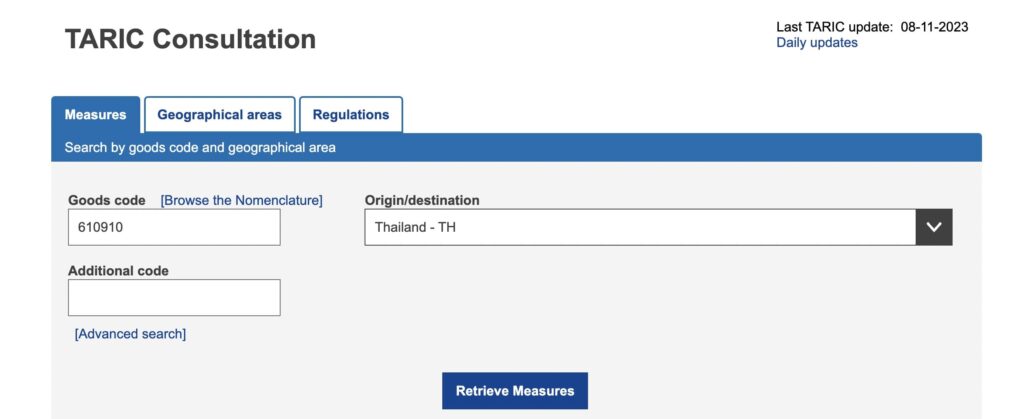
Start by adding your HS Code to the "Goods Code" section, along with the country of origin. Once this is done, click on "Retrieve Measures" and you will be led to a page where you can access and view the taxes and duties of your product.
Here's what the page looks like:
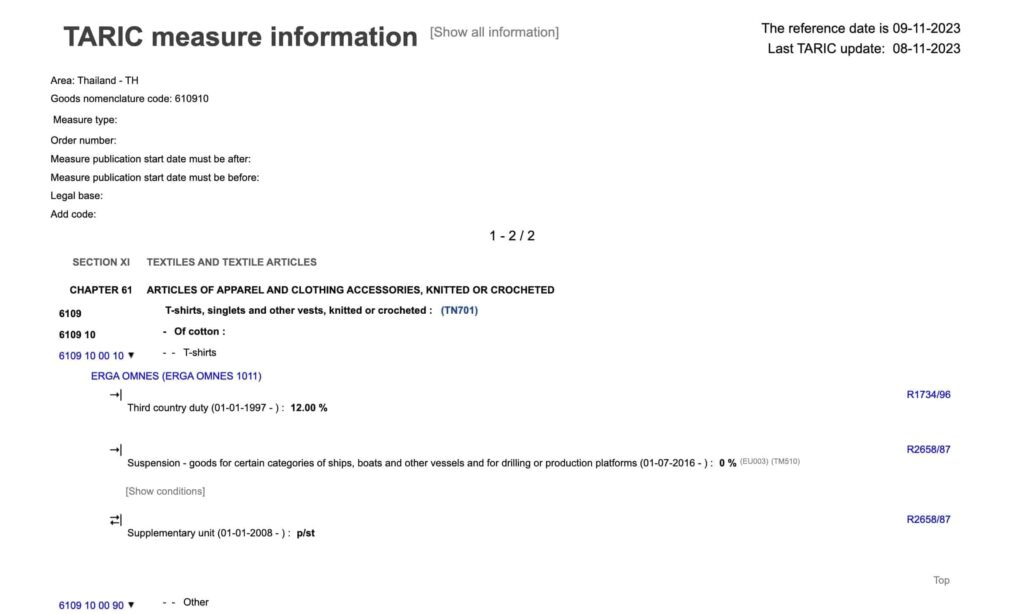
Step 5 - Consider other Import Duties and Taxes
Importing goods from Thailand to Ireland often involves paying more than just the standard tariff rate. Based on the product's origin and nature, you could face various import duties. For instance, you might pay excise duty on items like alcohol or tobacco. Additionally, anti-dumping taxes could apply if goods of a certain type are deemed to be sold significantly below their market value.
However, the one charge you can never avoid is the Value Added Tax (VAT). Import VAT is charged as a percentage of the total value of the goods, including costs such as shipping and insurance. As an example, suppose your goods are worth $5,000 with $500 in shipping. If the import VAT rate is 20%, your VAT would be ($5,000 + $500) 20% = $1,100.
Please note, these figures are merely examples and the actual rates may vary. Always confirm the current rates and possible duties with the appropriate customs authority. Understanding these duties lets you calculate potential costs ahead of allowing for a smoother import process.
Step 6 - Calculate the Customs Duties
Calculating customs duties can be a bit tricky, but it's an integral part of your cargo's journey from Thailand to Ireland. It involves factoring in several costs, such as the customs value of your goods, Value Added Tax (VAT), anti-dumping taxes, and sometimes Excise Duty.
To give you a better idea, let's run through three examples:
1. You're shipping a product worth $1000 with a customs duty rate of 10% but no VAT. You simply multiply the customs value by the duty rate. So, $1000 10% = $100 customs duty. Pretty straightforward, right?
2. Now, suppose you're shipping an item worth $2000 with a customs duty of 15% and a VAT rate of 20%. First, calculate the customs duty ($2000 15% = $300). Then, add this to the goods' value and multiply by the VAT rate ($2300 20% = $460 VAT). Your total import cost here would be $2760.
3. Let's add some complexity. You have an item worth $3000 with a customs duty of 20%, a VAT rate of 20%, an anti-dumping tax of 5%, plus Excise Duty of $500. The customs duty is $600 ($3000 20%). The anti-dumping tax equals $150 ($3000 5%). The VAT would then be $750 ($3150 20%). The total import cost becomes $4600 when you add in the Excise Duty.
Although these calculations might seem intimidating, DocShipper is here to alleviate that stress. We handle every step of the customs clearance worldwide, ensuring you're never overcharged. Ready to cast off your import worries? Contact us today to receive a free quote within 24 hours.
Does DocShipper charge customs fees?
Don't confuse customs clearance fees with duties. As a customs broker, DocShipper in Thailand and Ireland will bill for clearance services, but the customs duties themselves, those go directly to the government. To maintain transparency, you'll be handed official customs office documents, verifying that what you've paid is only what the government charged, nothing more. This principle ensures your shipping endeavor remains as cost-efficient as possible.
Contact Details for Customs Authorities
Required documents for customs clearance
Understanding customs clearance can feel like a mountain to climb, especially without the right documents. This section demystifies the Bill of Lading, Packing List, Certificate of Origin, and Documents of Conformity (CE standard), guiding you step by step. Because smoother shipping starts here.
Bill of Lading
Navigating customs between Thailand and Ireland? A key player in your process will be the Bill of Lading. Acting like a cargo passport, it marks your ownership transition. When your goods ride the high seas, this document is as vital as a captain to a ship. Fancy smoothing the process? Try an electronic 'telex' release. It's faster, cleaner, and casts off the shackles of traditional paper documents. And for those flying their goods, switch your gaze to the Air Waybill (AWB), the air cargo equivalent. Always remember, whether you're shipping Thai spices or Irish textiles, the Bill of Lading or AWB is your golden key for smooth sailing (or flying) through the customs process.
Packing List
The Packing List is your secret ally for a hiccup-free shipping journey from Thailand to Ireland. Picture yourself as a warehouse manager in Bangkok, packing a batch of artisan-made silverware for Dublin. Your Packing List has to detail the exact quantity, description, and weight of each item in the crates. It's crucial to be laser accurate - one small mistake can result in all kinds of hold-ups at customs, no matter if you're shipping by sea or air.
Let's face it, nobody wants their cargo stranded at Dublin Port or held back at Suvarnabhumi Airport. This document is like a passport for your goods, allowing them seamless passage through checkpoints, and a smoother delivery right to your customer's doorstep. Accuracy is key, so keep the Packing List as true to your cargo as possible to avoid any costly delays or fines.
Commercial Invoice
The Commercial Invoice is your point of truth when shipping goods from Thailand to Ireland. It contains specifics like product detail, value, the buyer, and seller, crucial for customs clearance. A misstep or mismatch here, say between your invoice and Bill of Lading, can delay your goods at the customs, leading to extra costs. So, ensure your documents align.
For instance, if your invoice states 'handcrafted ceramic vases', the same language should reflect on your other documents. Catering to your shipping needs, elbow grease in preparing your Commercial Invoice can save you time and headaches at the customs frontline. Don't overlook this essential document; it's your passport to smooth shipping!
Certificate of Origin
When shipping from Thailand to Ireland, your Certificate of Origin (CO) is paramount. This document proves where your goods were manufactured, and it can unlock numerous benefits like preferential customs duty rates. For instance, if you're shipping silk products made in Thailand, stating this in your CO may lead to lower duty rates under specific international trade agreements. It's crucial to ensure that every detail, especially about the country of manufacture, is accurate and backed by evidence. Misrepresentation can delay your shipment and result in penalties. So, remember, your CO isn't just a document; it's the key holder to smoother, more cost-effective shipping across borders.
Certificate of Conformity (CE standard)
As a business shipping goods from Thailand to Ireland, your products must adhere to the Certificate of Conformity (CE standard), a vital regulatory requirement in Europe. This isn't about quality assurance; instead, the CE mark indicates your goods comply with all mandatory European safety, health, and environmental protection standards.
For instance, a shipping load of electronic devices must meet specific electromagnetic interference and safety regulations. It's somewhat similar to the FCC standard in the US, but your goods need the CE mark for clearance when entering Ireland. To avoid hold-ups, ensure your manufacturer has conducted all necessary testing and certification procedures to validate your goods' compliance with the CE standard before shipping.
Remember: Having the CE mark not only smoothes your customs clearance process, but also boost customers' trust, as they know your products meet European safety standards.
Your EORI number (Economic Operator Registration Identification)
Shipping goods between Thailand and Ireland? The EORI Number is a critical piece of the puzzle. Acting as a unique identifier in customs procedures, it's essential for tracking your imports and exports within the EU. In our case, Ireland is very much a part of the EU, making the EORI Number especially relevant. Picture it like a backstage pass – it smooths your entry and exit, keeping goods moving smoothly because everything is tracked and registered. The registration process itself is straightforward – just apply through the customs authority in your country. So, don't underestimate the EORI Number. It's your golden ticket for a smoother shipping process.
Get Started with Siam Shipping
Navigating through customs can be tough and time-consuming. Don't let complex procedures cloud your shipping experience. With DocShipper, we put your mind at ease by handling every step of the customs clearance process. Eager to get started? Reach out to us and receive a free quotation within 24 hours. Let's simplify your international shipping experience.
Prohibited and Restricted items when importing into Ireland
Looking to ship items into the green landscapes of Ireland? Hang on tight. Legal and customs requirements can be a maze. Strict rules apply to importation, with certain items prohibited or under tight regulation. Save yourself headaches by understanding the do's and don'ts in advance!
Restricted Products
- Firearms and Ammunition: You have to apply for a firearm certificate from the Garda Síochána, the Irish Police forces.
- Pharmaceuticals and Cosmetics: A marketing authorisation from the Health Products Regulatory Authority (HPRA) is mandatory before selling these products in Ireland.
- Meat and Dairy Products: For importing meat and dairy products, you'll need a health certificate from the Department of Agriculture, Food and the Marine.
- Radioactive Materials: To import radioactive materials, you’ll need a license from the Environmental Protection Agency.
- Animals and Plants: You'll need to get a license or permit from the Department of Housing, Local Government & Heritage for importing any animals or plants.
- Tobacco Products: Importing tobacco products requires a permit from the Revenue Commissioner.
- Alcohol and Spirits: You need to get a liquor license from the Revenue Commissioner to import and sell alcohol and spirits in Ireland.
Remember, it’s always wise to frequently check these official websites as import regulations may change over time.
Prohibited products
- Narcotics and Illicit Drugs: Trafficking, possession, or use of illegal substances is heavily criminalized.
- Counterfeit Money and Goods: Stakes are high when dealing with counterfeit items and forgeries, including pirated materials.
- Threatening Offensive Weapons: Items such as guns, bullets, knives, explosives, and other weapons are prohibited unless a proper permit is presented.
- Endangered Animal and Plant Species: No items made from or containing parts of banned plants or animals will be allowed.
- Rough Diamonds: India prohibits the import of rough diamonds without a Kimberley Process Certificate.
- Obscene and Indecent Articles: Offensive literature, DVDs, computer files, etc. are disallowed.
- Live Animals and Pets: Appropriate documentation and quarantine may be required for animals and pets.
- Poultry: For sanitary reasons, importing poultry and birds of any kind is prohibited.
- Seal Pups, Fur, and Products: Due to animal protection regulations, such goods cannot be imported.
- Tuna Fishing Vessels: Only possible with proper licenses and permissions.
Are there any trade agreements between Thailand and Ireland
As of now, Thailand and Ireland don't have a specific Free Trade Agreement (FTA) or Economic Partnership Agreement (EPA). However, discussions are underway for an EU-Thailand FTA, which stands poised to simplify your shipping process significantly once finalized. Notably, Thailand is a part of the ASEAN bloc, offering potential customs advantages. Keep an eye on these evolving trade dynamics, as they will likely shape future opportunities for your business in both markets.
Thailand - Ireland trade and economic relationship
The economic bonding between Thailand and Ireland took shape in 2005, marking a blooming trade relationship grounded in mutual interest. Owing to a 335% increase, the Ireland-Thailand trade volume recently peaked at $447 million. Thailand’s innovation-driven digital tech and homeware sector is valuable to Ireland, while Ireland's dairy and alcoholic beverage sectors thrive in Thailand.
Notably, significant Irish investment in Thailand’s medical devices and pharmaceuticals industry has rocketed, contributing to Thailand's position as the second-largest destination for Irish investment in ASEAN. In 2021, Ireland had a large net trade with Thailand from exporting chemical products ($123M), instruments ($87,3M), and machines ($47,6M). Accordingly, Thailand had a large net trade with Ireland as well from exports such as machines ($319M), food-related products ($50,5M), and plastics and rubber ($29,8M). Their dynamic collaboration reflects a unique blend of trade, rich in diversity and resilient in nature, forming a robust and promising economic relationship.
Your Next Step with Siam Shipping
Looking to ship between Thailand and Ireland, but tangled in logistics? Don't let customs duties deter your global dreams. Let DocShipper take care of the end-to-end process, from selecting the best transport method to handling administrative formalities. No stress, just hassle-free shipping. Meet your deadlines, every time. Isn't it time to make international shipping a breeze? Reach out and let us elevate your business success to a global scale.
Additional logistics services
Explore beyond freight and customs with DocShipper's all-round supply chain management. From warehousing and distribution to packing and insurance, we've got your total logistics needs covered!

Warehousing and storage
Finding the right warehouse in Thailand or Ireland can feel like hunting for a needle in a haystack, especially when you've got commodities that need specific conditions like temperature control. Our strategic solutions could be the answer, offering secure spaces with state-of-the-art amenities. Why spin your wheels when you can rely on us? For the full rundown, take a peek at our Warehousing page.

Packaging and repackaging
Ensuring your goods reach Ireland safe and intact from Thailand is no small feat. That's where proper packaging and repackaging become essential! It can cater to anything, from delicate ceramics to solid car engines. Imagine wrapping your fine Thai silk in robust packages resistant to weather conditions on its journey. Or repackaging machinery using an advanced case crating system. Trusting a reliable agent ensures your shipment's secure journey. Learn more about this essential process on our dedicated page: Freight packaging.

Cargo insurance
Transporting goods, unlike sitting still like property covered by fire insurance, comes with its own unique risks. Picture unexpected typhoons at sea or turbulence in the air, situations where cargo insurance can be a life-saver. Imagine shipping high-end electronics - without adequate cover, a lost container could mean hefty losses. But, taking out a transport insurance policy could help you sleep better knowing you're covered for such unforeseen incidents. Leverage this plan to minimize risks and ramp up assurance for your business. More info on our dedicated page: Cargo Insurance.

Supplier Management (Sourcing)
Looking to manufacture in Asia or East Europe? DocShipper can bridge the language gaps and spearhead the procurement journey for your business. We find suitable suppliers and oversee the entire sourcing process to ensure a seamless production experience. Check out real-world examples and in-depth insights on our dedicated page: Sourcing services.

Personal effects shipping
Shipping personal items from Thailand to Ireland? From your heirloom china to that bulky vintage dresser, we've got you covered. We handle your fragile or bulky treasures with utmost professional care and flexibility, ensuring safe transit. Take the example of Mrs. O'Reilly, who trusted us with her grandfather's antique writing desk - it arrived on her Irish doorstep, as pristine as it left Bangkok. Curious? More info on our dedicated page: Shipping Personal Belongings.

Quality Control
Quality control is vital when shipping goods from Thailand to Ireland. It guarantees your merchandise meets international standards before embarking on its journey. For instance, intricate Thai crafts screened for quality assurance evade rejection at Irish customs, saving you time and costs. Don't risk sending sub-par products. More info on our dedicated page: Quality Inspection.

Product compliance services
Shipping goods globally? Complying with respective regulations boosts your business reputation. Our Product Compliance Services offer comprehensive lab tests and certification solutions. Rest easy knowing your product meets all requirements at the target destination. Real-world example: An exported Thai silk fabric passes Irish textile regulations, paving the way for seamless transactions. Curious? Product compliance services house more details.
FAQ | Freight Shipping between Thailand and Ireland | Rates - Transit times - Duties and Taxes
What is the necessary paperwork during shipping between Thailand and Ireland?
We maintain a streamlined shipping process from Thailand to Ireland. The essential paperwork you'll need includes at least the packing list and the commercial invoice. These are fundamental for customs clearance. Potential additional documents like Material Safety Data Sheets (MSDS) or certifications may be required depending on your particular goods. As for the bill of lading or air waybill, don't stress, we at DocShipper take care of that for ocean and air freight respectively. In doing so, we simplify the shipping process for you.
Do I need a customs broker while importing in Ireland?
While it's not a legal requirement to have a customs broker when importing into Ireland, we highly recommend it due to the complex procedures and mandatory documentation involved. A customs broker significantly eases this process by representing your cargo during customs clearance. At DocShipper, we handle these tasks in the majority of shipments, overseeing your imports and ensuring compliance with all customs laws and regulations. Using a customs broker minimizes any potential hiccups or delays, streamlining the entire process of importing into Ireland.
Can air freight be cheaper than sea freight between Thailand and Ireland?
While it's challenging to definitively say whether air freight would be cheaper than sea freight between Thailand and Ireland due to variables such as route, weight, and cargo volume, there is a guideline that could provide some perspective. If your shipment is less than 1.5 cubic meters or weighs under 300 kg (660 lbs), air freight becomes a competitive option you might want to consider. At DocShipper, our priority is to ensure you get the best suited and cost-effective shipping solution for your needs. You can count on your dedicated account executive to advise and offer the most economically viable option for you.
Do I need to pay insurance while importing my goods to Ireland?
While we facilitate the shipping of your goods to Ireland, it's important to note that insurance isn't obligatory. That being said, we strongly advise getting insurance. It safeguards you from potential incidents that could lead to loss, theft, or damage to your goods during transportation. Remember that any unforeseen event could significantly disrupt your business. So, while it's your choice, we sincerely recommend that you consider securing an insurance policy for your peace of mind and the safety of your valuables.
What is the cheapest way to ship to Ireland from Thailand?
Generally, we find that sea freight offers the most cost-effective solution for shipping goods from Thailand to Ireland. As these two countries are separated by vast distances, air shipping can be quite costly. The longer delivery times of sea freight are balanced by significant savings, especially for non-time sensitive shipments. Of course, specific costs will depend on various factors including cargo size and weight. We suggest to request a customized quote based on your specific requirements.
EXW, FOB, or CIF?
Choosing between EXW, FOB, or CIF depends on your current relationship with your supplier. It's crucial to note that they might not be logistics experts, so we, at DocShipper, recommend letting a professional agent handle the international freight and destination process. Suppliers tend to sell under EXW, which leaves goods at their factory door, or FOB, which includes all local charges up to the origin terminal. Regardless of the option you choose, we are fully equipped to provide a door-to-door service to simplify your shipping experience.
Goods have arrived at my port in Ireland, how do I get them delivered to the final destination?
When your goods reach their destination port in Ireland under CIF/CFR incoterms, you'll need a custom broker or freight forwarder for customs clearance, import charges payment, and final delivery. Alternatively, if you prefer a comprehensive solution, our DocShipper team can manage everything for you under DAP incoterms. Make sure you discuss these details with your account executive for clarification.
Does your quotation include all costs?
Absolutely, we at DocShipper believe in utmost transparency. Our quotations cover all costs barring duties and taxes at your destination. It is, however, possible to get an estimate of these duties and taxes from your dedicated account executive. This ensures that there are no hidden fees or unexpected expenses for your business.



